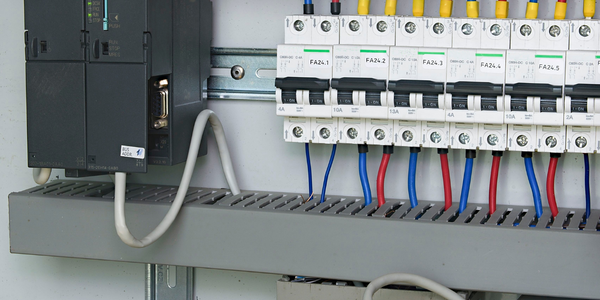Customer Company Size
Large Corporate
Region
- America
Country
- United States
Product
- JDA Demand Manager
- JDA Supply Chain Planner
Tech Stack
- Supply Chain Management Software
- Inventory Management Software
Implementation Scale
- Enterprise-wide Deployment
Impact Metrics
- Productivity Improvements
- Customer Satisfaction
Technology Category
- Functional Applications - Inventory Management Systems
Applicable Industries
- Electronics
Applicable Functions
- Discrete Manufacturing
- Logistics & Transportation
Use Cases
- Inventory Management
- Supply Chain Visibility
Services
- Cloud Planning, Design & Implementation Services
- System Integration
About The Customer
Marvell Semiconductor is a $4 billion company headquartered in California’s Silicon Valley. The company is on the cutting edge of technology, manufacturing a diverse range of products including storage devices, controllers, routers, switches, gaming devices, multimedia chips, and printers. Marvell’s products are based on new technologies and automation. In each of its business areas, performance speed is extremely important. This is especially true in product categories like gaming, where consumers want faster performance and better graphics. However, Marvell operates in an industry known for its long cycle times, with it taking approximately 14 weeks to build a product from scratch. This poses a challenge as customers generally do not want to wait that long. In order to meet customer requests, Marvell needed solutions to help manage its inventory and position it at the right point in the supply chain.
The Challenge
Marvell Semiconductor, a $4 billion company based in California's Silicon Valley, manufactures a diverse range of products including storage devices, controllers, routers, switches, gaming devices, multimedia chips, and printers. The company operates in an industry known for its long cycle times, with it taking approximately 14 weeks to build a product from scratch. This poses a challenge as customers generally do not want to wait that long. In order to meet customer requests, Marvell needed solutions to help manage its inventory and position it at the right point in the supply chain. One of Marvell’s key supply chain objectives is to meet – and exceed – its customers’ expectations. It aims to have the right product in the right place at the right time for delivery to the customer. At the same time, it’s important to drive revenue, so the company has to manage its inventory carefully and have a good supply chain in place – one that can be changed rapidly to meet customer requests. This enables Marvell to bring products to market faster, or in certain cases, be flexible enough to shift to a different product when demand changes.
The Solution
Marvell embarked on an initiative with JDA Software to optimize its supply chain processes. With help from the JDA Services team, Marvell implemented integrated forecasting and supply planning capabilities from JDA’s Manufacturing Planning solution. The company uses JDA’s Manufacturing Planning solution to manage its forecast, leveraging a single view of demand for running its business. The solution aggregates inputs from a number of different sources to generate a single forecast that helps Marvell run the company — not just the supply chain, but the entire business. Marvell's revenue projections, inventory management, and manufacturing plan are now all based on the same number. One of the most significant benefits of the implementation was the creation of a single statement of demand. The company has also made gains in its inventory management capabilities. It can now set inventory levels for different products, so that excess inventory does not accumulate. Marvell also has greater visibility into potential excess inventory, enabling it to react to it sooner.
Operational Impact
Quantitative Benefit

Case Study missing?
Start adding your own!
Register with your work email and create a new case study profile for your business.
Related Case Studies.

Case Study
Remote Temperature Monitoring of Perishable Goods Saves Money
RMONI was facing temperature monitoring challenges in a cold chain business. A cold chain must be established and maintained to ensure goods have been properly refrigerated during every step of the process, making temperature monitoring a critical business function. Manual registration practice can be very costly, labor intensive and prone to mistakes.

Case Study
Predictive maintenance in Schneider Electric
Schneider Electric Le Vaudreuil factory in France is recognized by the World Economic Forum as one of the world’s top nine most advanced “lighthouse” sites, applying Fourth Industrial Revolution technologies at large scale. It was experiencing machine-health and unplanned downtime issues on a critical machine within their manufacturing process. They were looking for a solution that could easily leverage existing machine data feeds, be used by machine operators without requiring complex setup or extensive training, and with a fast return on investment.

Case Study
Cloud Solution for Energy Management Platform-Schneider Electric
Schneider Electric required a cloud solution for its energy management platform to manage high computational operations, which were essential for catering to client requirements. As the business involves storage and analysis of huge amounts of data, the company also needed a convenient and scalable storage solution to facilitate operations efficiently.

Case Study
Leveraging the IoT to Gain a Competitive Edge in International Competition
Many large manufacturers in and outside Japan are competing for larger market share in the same space, expecting a growing demand for projectors in the areas of entertainment, which requires glamor and strong visual performance as well as digital signage that can attract people’s attention. “It is becoming more and more difficult to differentiate ourselves with stand-alone hardware products,” says Kazuyuki Kitagawa, Director of Service & Support at Panasonic AVC Networks. “In order for Panasonic to grow market share and overall business, it is essential for us to develop solutions that deliver significant added value.” Panasonic believes projection failure and quality deterioration should never happen. This is what and has driven them to make their projectors IoT-enabled. More specifically, Panasonic has developed a system that collects data from projectors, visualizes detailed operational statuses, and predicts issues and address them before failure occurs. Their projectors are embedded with a variety of sensors that measure power supply, voltage, video input/ output signals, intake/exhaust air temperatures, cooling fan operations, and light bulb operating time. These sensors have been used to make the projector more intelligent, automatically suspending operation when the temperature rises excessively, and automatically switching light bulbs. Although this was a great first step, Panasonic projectors were still not equipped with any capability to send the data over a network.









